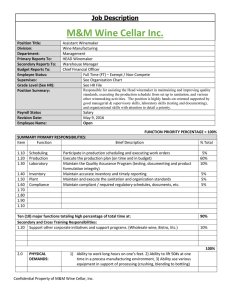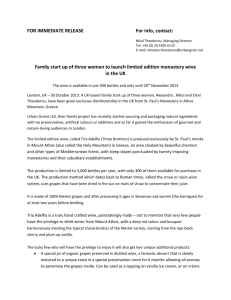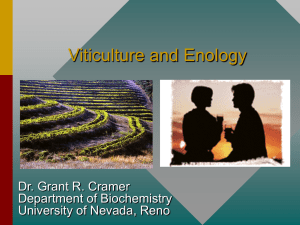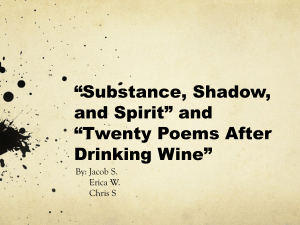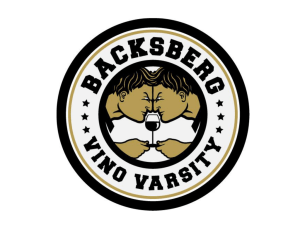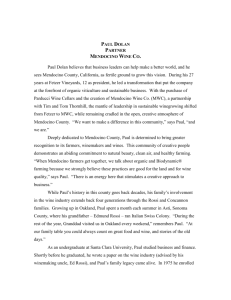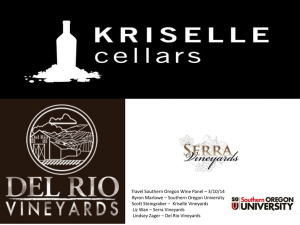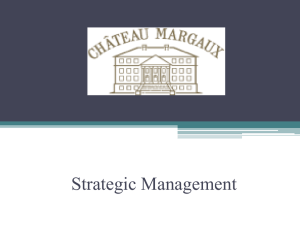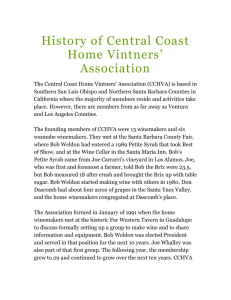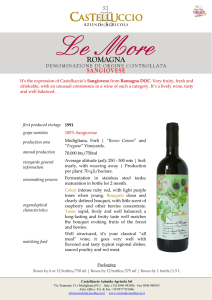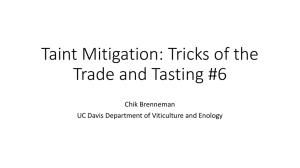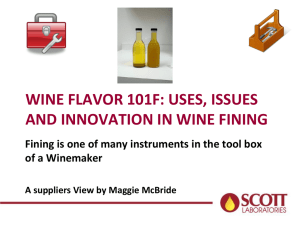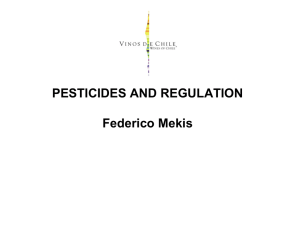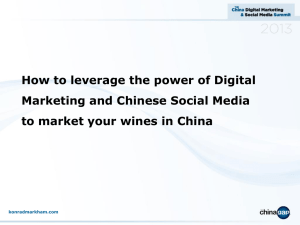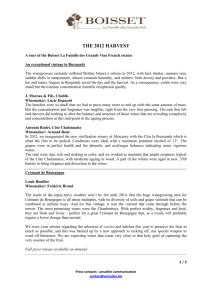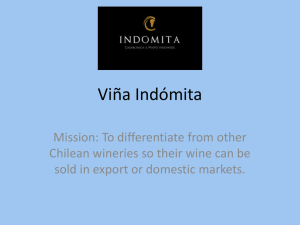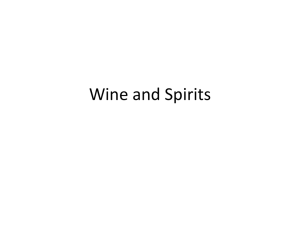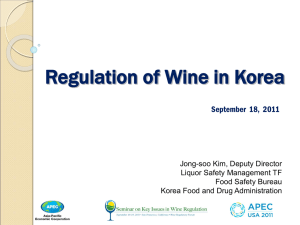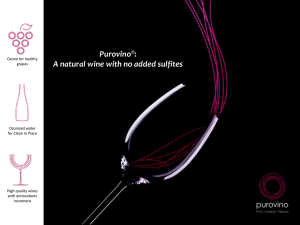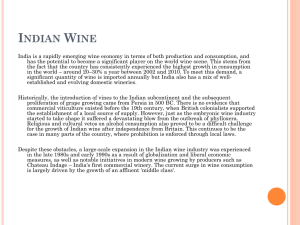PTOSlides - Law Office of Paul W. Reidl
advertisement
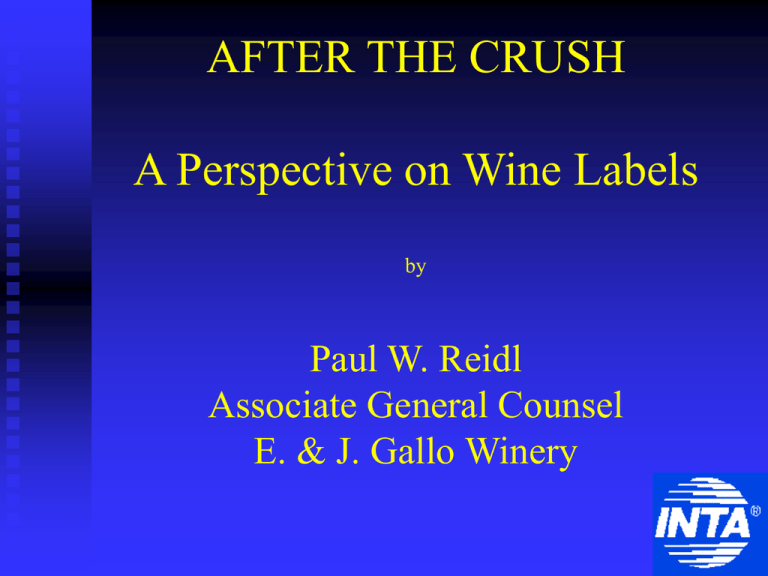
AFTER THE CRUSH A Perspective on Wine Labels by Paul W. Reidl Associate General Counsel E. & J. Gallo Winery I. WHAT IS A WINE? Wine is the product of fermented grapes. Wine is the product of centuries of tradition. II. WHAT GIVES WINE ITS FLAVOR? The characteristics of the grapes. The geographic and climatological conditions under which the grapes are grown The skill of the winemaker. Yeast selection Fermentation Aging Wine Label Designations Have Been Influenced By Three Things: Tradition, Geography, and the Winemaker’s Ability to Influence the Final Product. III. THERE ARE FOUR LABELING SCHEMES Traditional Old World: “The Primacy of Place.” Traditional New World: “Who and Where?” Modern New World: “What’s the Story?” Fictitious Names/Icons and Logos. A. Traditional Old World Labeling: The Primacy of Place. Thesis: Geography makes the wine. Primary Designation: Geographic Indication. Secondary Designation: Name of the Producer. What is a Geographic Indication? A government-designated place with special growing characteristics. American Viticultural Area, Appellation D’Origin, DOCG, etc. This should not be confused with the name of a geographic fixture that happens to be in an area where wine grapes are grown. Examples: Geographic Indications: Burgundy Bordeaux Napa Valley Chianti South West Australia Barossa Valley Not Geographic Indications: Livingston Cellars Redwood Creek Stoney Point Black Bear Ridge Black Forest B. Traditional New World Labeling: Who and Where? Thesis: The Skill of the Winemaker is Paramount. Personification/Surnames Gallo, Mondavi, Franzia, Heitz, McWilliam’s, Beringer Geographic location is secondary. C. Modern New World Labeling: What’s the Story? Thesis: Apply modern marketing to wine but respect consumer preference for tradition (geography, personification.) These labels are suggestive of people or places, or simply fanciful. Emphasis on a total marketing package. This is why there are so many labels containing “creek,” “mountain,” “ridge,” “valley,” etc. They provide a connection with the land. The marketing programs for these brands will frequently suggest a family/winemaker connection. D. Fanciful Names These can be successful, but are not as common as the others. Some of these labels have icons which become the symbol of the brand. Icons are useful for cross-merchandizing. IV. THE FUTURE? Old World Modernization? Example: French Ministry report. Heritage Labeling? Example: Franzia package.
